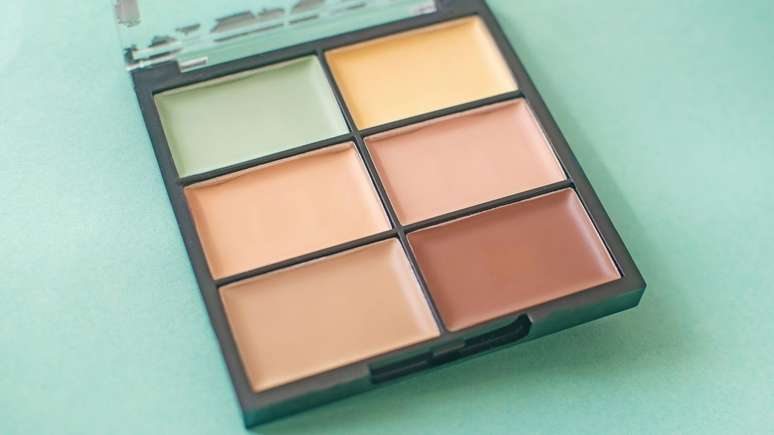Different concealer colors have specific functions and results; find out how to make the most of each of them
In the early 2010s, there wasn’t a makeup lover who didn’t have a tinted concealer! Now, after a few years, nothing more appropriate than this product having its #tbt moment and becoming a trend again.
Colored pigments are ideal when you need to camouflage skin imperfections. Each shade of concealer will work for a different type of blemish, always following the rule that complementary (i.e. opposite in position) colors on the color wheel neutralize each other.
Those who work with makeup techniques use it a lot, so they usually already know several neutralizing combinations at first glance. For most people, on the other hand, it can be difficult and time-consuming to memorize what types of imperfections each color helps hide.
With this in mind, Natasha Lima, makeup artist at Melu, explains the function of the main color concealers, so you’ll always know when to choose them:
Lilac concealer – Yellowish/brownish spots
Lilac pigment softens yellowish and brownish spots. It applies to melasma, sunspots and freckles, among others.
Yellow concealer – Purple spots
If lilac neutralizes yellow, the opposite is also true. The yellow concealer works to neutralize purple spots, such as dark circles, bruises and even more pronounced veins. It is especially useful for people with very fair skin, as the purplish spots are more noticeable.
Orange concealer – Bluish spots
Suitable for medium to dark skin tones, orange concealer, as a complementary color to blue in the color wheel, can be the solution to bluish dark circles. It also helps to even out skin color when applied to cold, grayish spots.
If you don’t have the product in this color, it’s easy to replace it with lipsticks or other reddish or orange creamy makeup.
Salmon Concealer – Bluish/brown spots
Because it resembles orange, salmon is useful for bluish spots. However, it has the added benefit of also working to neutralize brown spots. Helps hide both dark circles and melasma.
Tips for a good result
In order for your skin to look the way you want after applying tinted concealer, a few steps are very important. Moisturizing your skin beforehand is one of them, as it prevents the chapped effect.
As for how to spread the product on the desired area, this can be done with your fingers, a brush or a makeup sponge. You should know that if you choose the brush, it will have to have soft bristles.
Finally, don’t forget to apply foundation and powder to your skin at the end. The result is much more natural this way.
Source: Terra
Ben Stock is a lifestyle journalist and author at Gossipify. He writes about topics such as health, wellness, travel, food and home decor. He provides practical advice and inspiration to improve well-being, keeps readers up to date with latest lifestyle news and trends, known for his engaging writing style, in-depth analysis and unique perspectives.






-to4l92e9v7fo.jpg)


